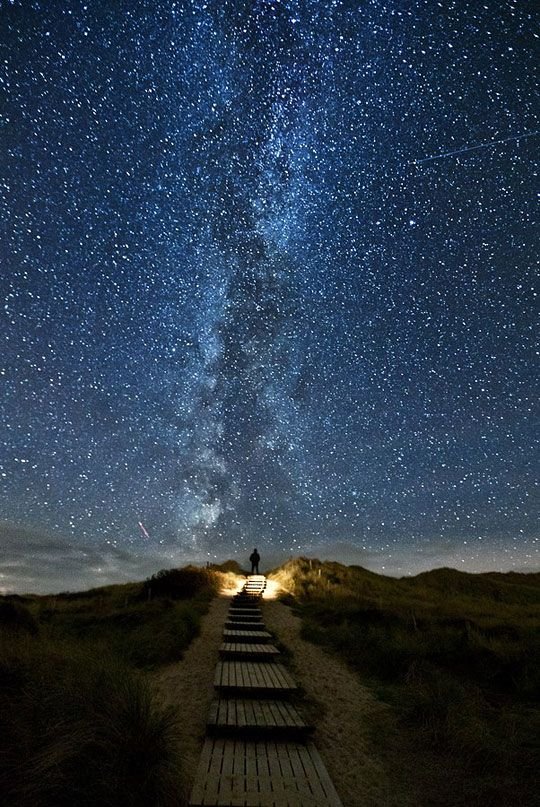
The Camino de Santiago – also known as the Way of St. James in English – is the name of any of the pilgrimage routes which travel to the shrine of the apostle St. James in the Cathedral of Santiago de Compostela in Galicia, Spain. This is where, legend has it, the remains of Saint James are buried.
Since the route, along northern Iberia, seems to follow the route of the milky way is has acquired an association with it. The Spanish word “Compostela” comes from the Latin “Campus stellae” which literally means “field of stars”.
The association is so close in Spanish culture that a popular name for the milky way in Spain is “El Camino de Santiago”. This link also birthed several myths and legends. In one common medieval legend the milky way was created by the dust raised by travelling pilgrims. In another myth Saint James appeared in a dream to the Emperor Charlemagne and urged him to follow the route of the milky way to liberate his tomb.
The earliest records of Christian pilgrims taking this route to the tomb of St James date from the 9th century however the trail was an important route long before Christianity as well. The druids of ancient Iberia used to follow the route of the milky way to Finisterre and what they believed was the end of the world.
The beautiful route has continued to attract pilgrims from across the world – both religious and non religious alike. In 2014 it is believed that over 20,000 people went on the pilgrimage and this number is only increasing.
Have you ever completed the Camino de Santiago? Or would you like? Either way tell us below in the comment section!
